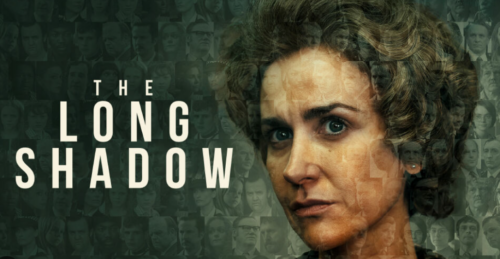An ITV drama based on the five-year killing spree of Peter Sutcliffe – dubbed the Yorkshire Ripper – across the north of England, has featured Ison Harrison’s Inquest lawyer Ruth Bundey.
The seven-part drama first aired in September 2023 and depicted the culture of fear that existed during Sutcliffe’s reign of terror, which saw him kill 13 women between October 1975 and November 1980, and attempt to murder seven more. There is considerable evidence that Sutcliffe’s crimes were far more widespread than this, possibly dating back to 1969, but these were the crimes he admitted to when he was eventually caught in Sheffield in January 1981, following one of the biggest and most expensive manhunts in British criminal history.
Ruth Bundey was living in Chapeltown, Leeds in 1975 when Sutcliffe claimed his first victim nearby, 28-year-old mother of four Wilma McCann. Police soon mistakenly linked Sutcliffe’s crimes to “a hatred of prostitutes”, a naïve prejudice which would sideline the investigation for several years. Chapeltown was crudely regarded as the red-light district of Leeds at the time, but there was no evidence that Wilma McCann was a sex worker; she merely lived in the area. Some of Sutcliffe’s victims were involved in sex work, but the unflinching misogyny and preconceptions of the police led to many lost lines of enquiry which could have helped solve the unravelling horror of Sutcliffe’s killings much sooner.
Marcella Claxton, 20, was four months’ pregnant and was walking home from a party in Chapeltown in May 1976 when Sutcliffe offered her a lift home, wrongly believing she was a sex worker. He let her out of his car in Roundhay Park and attacked her head with a hammer from behind, leaving her for dead. Marcella miraculously survived the attack but managed to contact an ambulance.
She is a key part of the ITV Series.
Marcella very nearly became Sutcliffe’s third murder victim, and yet the police dismissed her evidence and refused to link it to previous murders, or indeed any future murders, despite the mode of attack being identical. Police wouldn’t accept her evidence that her attacker was white and believed she was attacked in relation to a sex work transaction gone wrong, though Marcella was able to give an accurate description of the man who turned out to be Peter Sutcliffe. Nine months later, in February 1977, Irene Richardson became Sutcliffe’s third victim when her dead body was found in the same area of Roundhay Park.
Ruth Bundey, played in the ITV series by Alexa Davies, represented Marcella after she claimed compensation from the Criminal Injuries Compensation Board, but was refused in 1977 because the Board incorrectly believed Marcella had invited the attack upon herself due to her supposed line of work. This was despite Marcella requiring brain surgery and over fifty stitches following the attack, and also suffering a miscarriage.
Overwhelmed police investigation
The ruling reflected a prevailing misconception within the media and public organisations at the time, which also diverted the police investigation into farce. With an overwhelmed, manual filing system that had no cross-referencing mechanism, mountains of possible leads were missed, including Sutcliffe himself who was interviewed nine times but escaped suspicion every time. Sutcliffe’s victims were described as having “loose morals” and were afforded little public sympathy until it became known that his latest victims were definitely not sex workers, at which point it was claimed that he had made a mistake by killing ‘” innocent’” women.
In the ITV drama, Ruth Bundey is accurately portrayed as a force for good amidst the late-1970s bigotry and misogyny that existed in the public domain. Marcella Claxton continued to struggle with her rehabilitation from the physical and psychological trauma of Sutcliffe’s attack, while Sutcliffe himself continued his killing spree in Leeds, Bradford, Manchester, Halifax and Huddersfield.
Alongside the ITV drama, a three-part documentary series made by the BBC in 2019 has also recently been re-transmitted. Called “The Yorkshire Ripper Files – A Very British Crime”, the series features interviews with Ruth Bundey herself, whilst it concentrates more closely on the outdated prejudices, discarded evidence and the links critically missed by police during the chaotic investigation. When Josephine Whittaker, a 19-year-old Building Society clerk, was killed in Halifax in April 1979, Sutcliffe’s tenth victim, public perception saw a tipping point. People began to realise ‘anyone’ was potentially at risk and started to cast doubt on the police obsession that Sutcliffe’s motivation was a “hatred of prostitutes”. In the programme, Ruth speaks of a “culture of fear” where everyone became suspicious of their own neighbour, and women were instructed to stay home after dark, an instruction which was angrily met by the call for a” Curfew on men”. At the same time, the police became disastrously side-tracked by a hoax letter and tape recording from a man in Sunderland declaring himself to be the Ripper.
Justice at last for Marcella Claxton
Whilst it felt like West Yorkshire Police were never going to catch the serial killer, Sutcliffe was arrested quite by chance by police in Sheffield in January 1981, when he was stopped in a red-light area for having false number plates. In custody in Dewsbury, West Yorkshire police finally began to piece evidence together and Sutcliffe soon confessed to 13 murders and seven further attacks. He received 20 life sentences in court which brought to an end a devastating period of savagery.
One of the attacks Sutcliffe admitted to was that of Marcella Claxton in 1976. By now, Ruth Bundey, a trainee solicitor about to qualify in 1980, had been able to appeal her compensation claim and at last Marcella was awarded £17500 in 1981. However, much in keeping with the failing systems of the time, Marcella lost her social security benefits as a result.

















